The best iPad for note-taking in 2025: A deep dive comparison
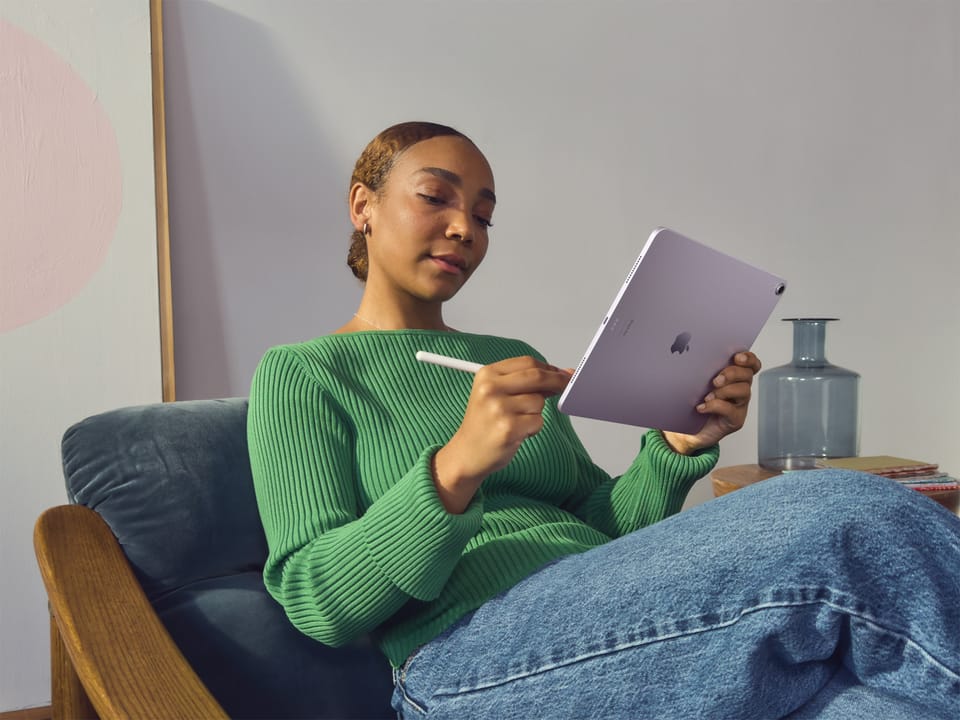
Tired of juggling notebooks, sticky notes, and leaky pens? You’re not alone. Maybe you’ve seen your friend or colleague sit down in the lecture room or business meeting, flip out their fancy iPad and Apple Pencil, and effortlessly scribble words on screen. No smudged pages, no ink running out.
You want in.
You want to experience the future of note-taking.
But which iPad do you need?
This guide breaks down the best iPads for writing, note-taking, and journaling—so you can focus on the writing experience without any hiccups or regrets.
Here’s a quick side-by-side comparison of the latest iPads:
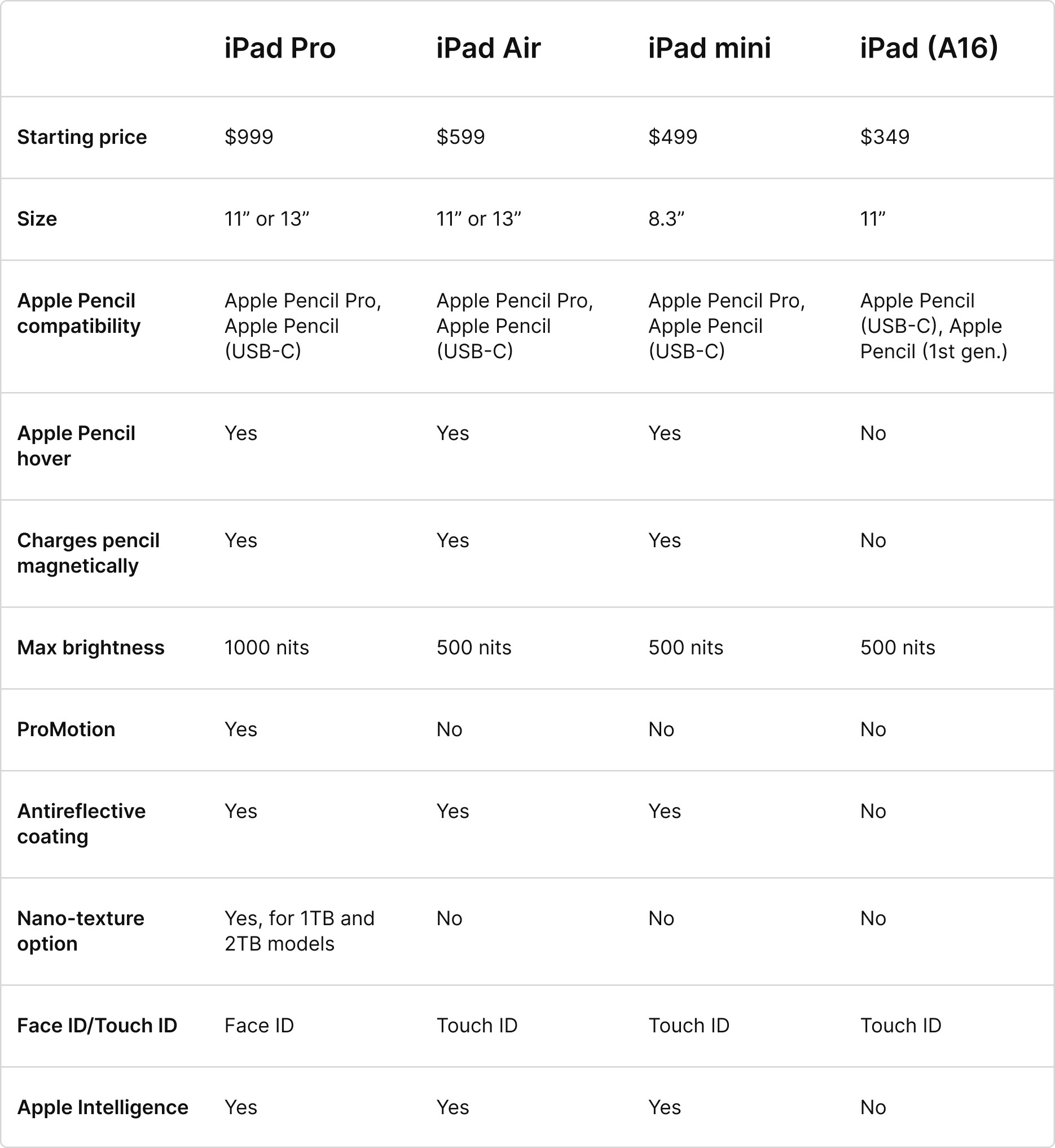
iPad Pro - The ultimate writing experience
- Only model to offer ProMotion display
- Only model with Face ID instead of Touch ID
- Only model to offer 1000-nit brightness
- Only model with nano-texture option

If you have the budget, the iPad Pro is hands-down the best iPad for writing. While the chip and camera may be overkill for our purposes, the iPad Pro offers features that will take your writing experience to the next level.
With ProMotion technology, it will feel like the lines draw out instantly as you scribble your pencil, and flipping pages will be buttery smooth. The nano-texture option minimizes reflections while also adding a silky, paper-like feel to your screen. You’ll find the 1000-nit display handy if you ever find yourself writing outdoors or in a bright setting (i.e. lecture rooms, meeting rooms).
If there’s one small catch, Face ID is a little tricky—as some actually prefer the Touch ID. When writing flat on a desk, you might find it awkward to lean over just to unlock your iPad with Face ID. Plus, keep in mind that you’ll need to choose a high-capacity model for the nano-texture glass, adding $700 in total to the base price.
Nonetheless, the iPad Pro is undeniably the best option all-around if you have money to spend.
iPad Air - Almost perfect, half the price
- More color options
- Touch ID
- Nearly half the price of iPad Pro
- Packed with all the essential features
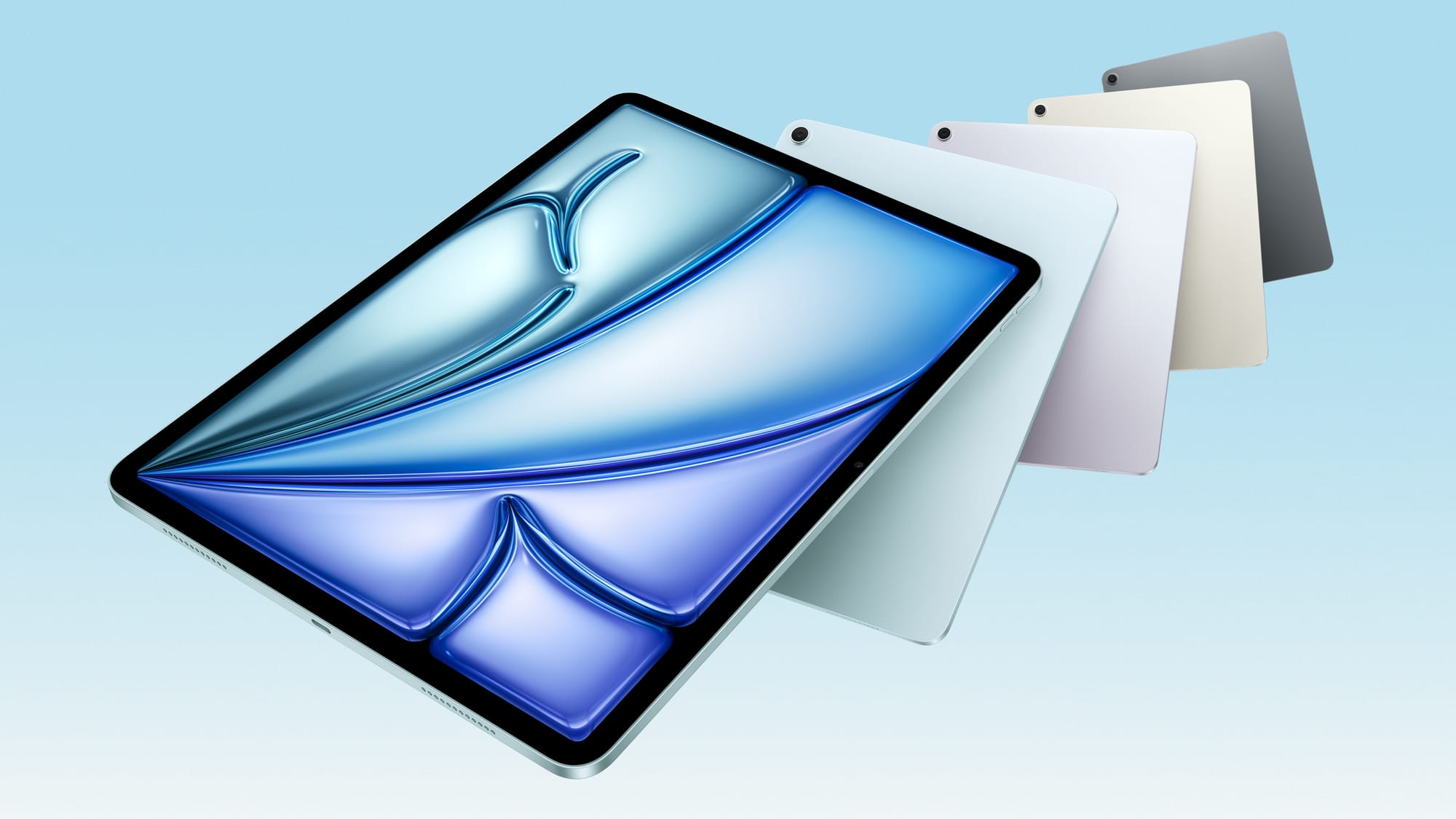
Yes, the 1000-nit ProMotion display sounds nice, but is it really worth the money? If you’re split because of nano-texture glass, keep in mind that the cheapest combination for nano-textured iPad is 3 times the price of the base model iPad Air.
For most writers, students, or professionals, the iPad Air offers all the essential features without breaking the bank. It is compatible with Apple Pencil Pro, can run Apple Intelligence, has antireflective coating, and supports Apple Pencil hover. Unless you’re willing to spend hundreds of dollars for a smooter, brighter screen, this is likely your best pick.
iPad mini - Unmatched portability
- Same specs as the iPad Air in a compact size
- Small enough to fit in large pockets
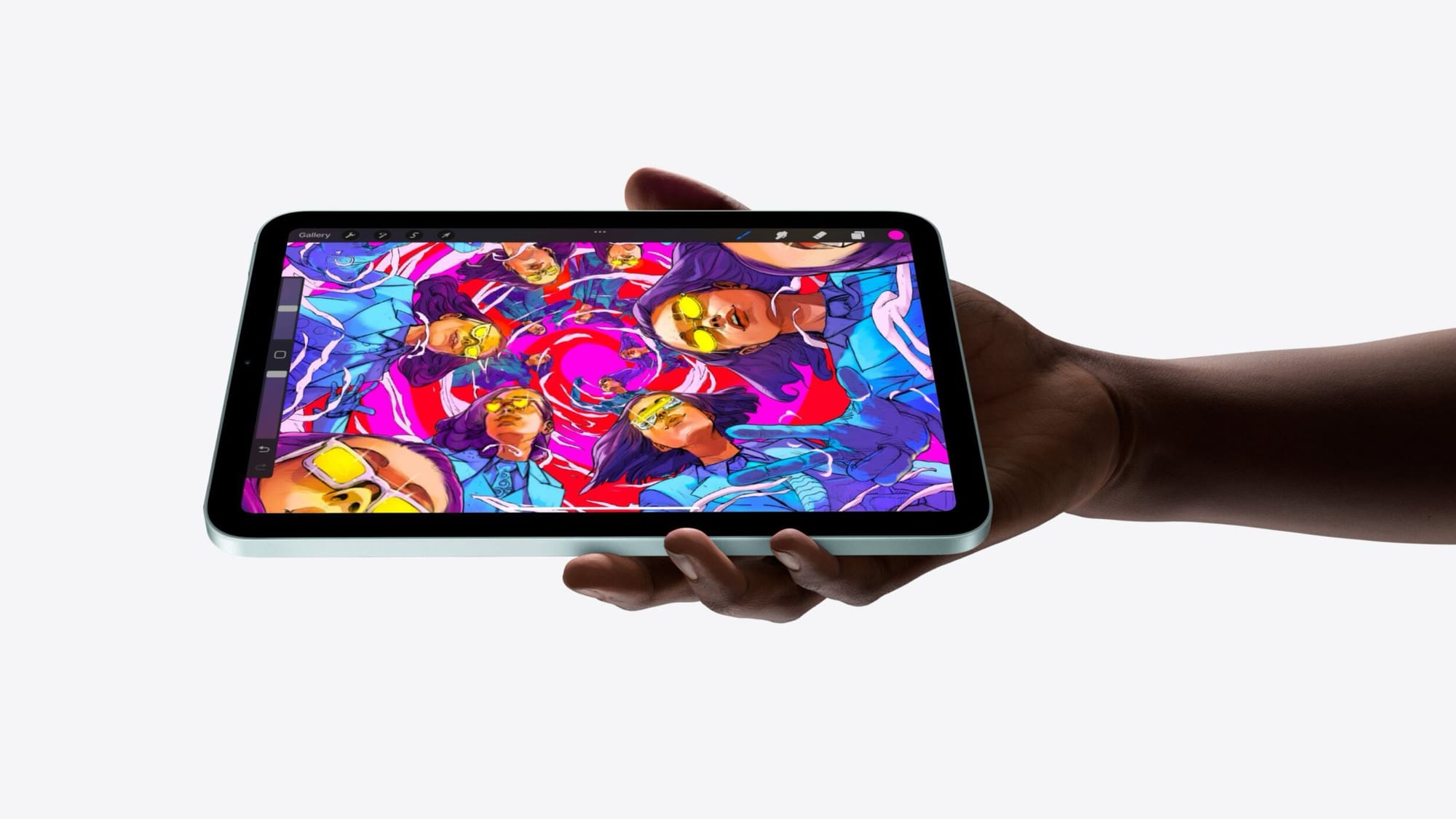
If you’re someone who is always on the move and needs to jot up a note on the spot, the iPad mini is for you. The iPad mini is basically just an iPad Air with an 8.3” display, as it shares most features like color options, display specs, and Apple Pencil compatibility. The iPad Air does come with the more advanced M3 chip, but the difference is negligible in note-taking.
That said, the smaller screen isn’t so ergonomic when writing on a desk, since your hands will fall off the edge of the screen more often.
iPad (11th generation) - On a tight budget
- Offers vibrant colors
- Doesn’t support Apple Pencil Pro
- Can’t charge Apple Pencil on the side
- Doesn’t support Apple Pencil hover
- No laminated display or antireflective coating
- Only Apple device without Apple Intelligence
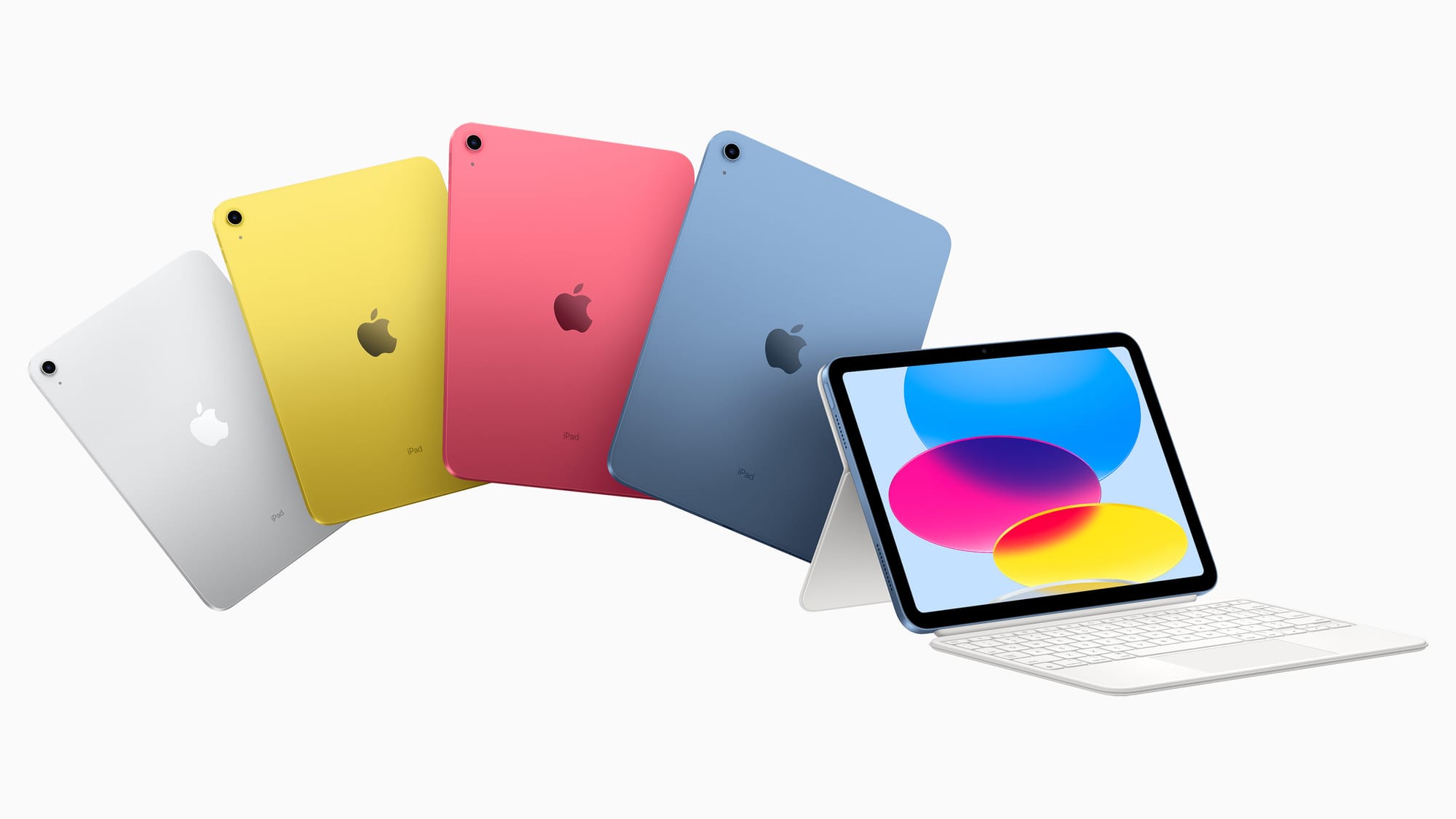
If you’re on a tight budget, the 11th generation iPad (a.k.a. iPad (A16)) might seem appealing, as it is the cheapest option in Apple’s tablet lineup.
But be aware of the tradeoffs.
Because the display isn’t laminated, there’s an air gap between the glass and the screen, which adds parallax when writing. It lacks antireflective coating, which means you’ll see more glare and reflections.
Not being able to use Apple Pencil Pro is a bummer, but not as bad as not being able to pair or charge a pencil wirelessly by sticking it to the side. Having to bring out a cable to awkwardly plug in your Apple Pencil every 12 hours of use might become a burden after continued use.
It also lacks future-proofing features like Apple Intelligence. If possible, try to save up or check for refurbished deals for an iPad Air.
So which iPad should I buy for note-taking?
If you still cannot decide, the iPad Air is a solid choice for someone venturing into paperless writing. It has all the essential features you need, and is offered at a reasonable price.
If you need a recommendation for Apple Pencil and other iPad accessories to level up your experience, keep an eye out for our upcoming guides on Apple Pencil tips, must-have apps, and iPad accessories.
What about Androids?
Ok, we know there are some big Android fans in the house, and there’re also new players like Amazon, Kobo, and reMarkable. While competitors have put out incredible tablet devices in recent years, we still think that when it comes to handwriting precision, stylus responsiveness, and compatibility with top-tier note-taking apps like Goodnotes and Notability, the iPad still leads the pack.
Want us to explore other tablets too? Let us know!
Don’t know where to get started with digital notes?
Choose from our library of 30,000+ planners, journals, notes, stickers, and more on Webudding!
Comments ()